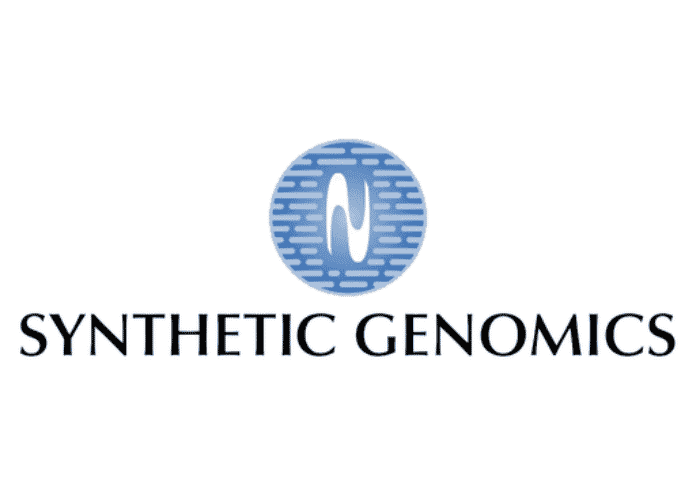How to Indirectly Invest in Synthetic Genomics Stock
Table of contents
Table of contents

One of the biggest themes we see here at Nanalyze is a strong interest from retail investors to invest in exciting emerging technology startups. Take a look at any exciting startup like Synthetic Genomics and you will see the most popular searches are “synthetic genomics stock” or “synthetic genomics ticker”. While we’ve given you at least several ways you can buy pre-IPO shares, it’s rare to see an investment opportunity that involves a leading emerging technology startup.
Which emerging technology startups are “leading”? One way to figure that out is to look at who is running the startup, who is backing it, who is working with them, and the amount of funding they’ve taken in. In all sincerity, we would consider Synthetic Genomics (SGI) to be the most exciting synthetic biology startup out there. We’re going to tell you why, and we’re going to tell you how you can get exposure to their shares.
Synthetic Genomics
This isn’t the first time we’ve written about Synthetic Genomics. We first wrote about the co-founder, Craig Venter, who has a pedigree that is difficult to put in words – few words that is. He was one of the first people to sequence the genome and went on to create synthetic life. Ascribing deity status to this man seems merited. He’s like George Church but with a better manicured beard. The second time we wrote about Synthetic Genomics, we highlighted the three areas of work they were focusing on along with speculations that we could see an IPO from them while the market remains hot. Now, we’ve discovered a way for retail investors to get some exposure to Synthetic Genomics preferred stock and we’re eager to see what they’ve been getting up to since our last article.
The best way to find out what SGI is getting up to is by looking at their “applied products” which are applications of synthetic biology to create commercial products in partnership with some very notable companies:
| Began | Company | Product development |
| 2010 | Sequirus | Influenza vaccines produced in 5 days vs. 35 days |
| 2011 | United Healthcare (UTHR) | Xenotransplantation – Pig Organs for Humans |
| 2009 | Exxon | Algae-based biofuels |
| 2014 | Archer Daniels Midland | Develop Omega-3 DHA from algae |
| Unknown | GlaxoSmithKline | RNA-based vaccines |
This looks like a similar business model to Intrexon (NYSE:XON), except in this case SGI is working with some very big players. In addition to these partnerships, SGI also has a wholely owned subsidiary called SGI-DNA that sells the world’s first DNA printer, a genomic discovery suite called Archetype, and the Gibson Assembly Method that was invented by a guy named Dan Gibson who works at SGI now. It’s safe to say these tools and services are best in class:
Now after you’ve read all the evidence we’ve put forth, is it safe to say that at this point in time you would say to yourself, “if I had to pick a possible winner in synthetic biology I might not do so bad making an investment in Synthetic Genomics“? As a retail investor though, how can you possibly get any exposure to this exciting company since they are private? Here’s where things get even more interesting if that’s possible.
We’re going to switch focus for a moment here, and throw up a hypothetical pharmaceutical company with the following positive attributes:
- PE of 9.31 (means it’s cheap AF – typically this means investors believe in very little earnings growth )
- $1 billion in cash on hand
- An aggressive share buyback program
- A “small” market cap of $6.3 billion
- A founder who is nothing short of a technology prodigy and who sits on the Synthetic Genomics board
- A likely contender to solve the xenotransplantation problem with a full roadmap to make that happen
- Revenues and earnings growth that look like this (revenues in billions)
Now what if we told you that this same company also holds $100 million in Synthetic Genomics preferred equity stock. Sounds too good to be true right? You’re going to have to make that judgement call yourself, but let’s focus first on how sizable a $100 million equity investment in Synthetic Genomics might be. (Note that this equity investment was made in two parts – $50 million in April of 2014 and $50 million in September of 2015).
According to CB Insights (the gold standard of private company data), Synthetic Genomics has taken in $375 million in funding so far. This means 26.66% of this investment comes from our fictional company. Since funding rounds take place at differing valuations, the truth is we don’t know what percentage of Synthetic Genomics is owned by our fictional company but we do know that it is meaningful.
So who is this fictional pharma company? It’s a company we covered in our recent xenotransplantation article called United Therapeutics (NASDAQ:UTHR). Their CEO Martine Rothblatt is the prodigy behind this very successful pharma company and she also sits on the board of Synthetic Genomics.
Let’s say that Synthetic Genomics is a unicorn today, and that being the leader in synthetic biology, they will achieve a market cap of say $50 billion in the next few decades. That means that a 26% investment in Synthetic Genomics at today’s valuation would be worth $13 billion or 3X the current market cap of UTHR today (minus cash on hand). Sure, there are a lot of hypotheticals there, but the truth is UTHR holds a meaningful amount of equity in Synthetic Genomics such that you can receive exposure to Synthetic Genomics stock by investing in UTHR. It’s not a pure-play by any means, but it’s meaningful exposure.
The fact that UTHR stock is so “cheap” is scaring the hell out of some investors right now. Speculation abounds right now that Wall Street knows something we don’t, and that UTHR will implode some day soon. Then, you have this incredible technology genius CEO saying that UTHR stands for “Under THe Radar” and that her company will soon have Google-like proportions when they master xenotransplanation. We can at least say that this is one of the most interesting investments we’ve come across in a long time.
Conclusion
The truth is, this is probably going to go one of two ways. It will either blow up in a spectacular fashion or present one of those rare investments that people like to call “X baggers”. As for us, we spent a lot of time watching Martine speak and we’re betting on her as a leader by accumulating a prudent position in UTHR using dollar cost averaging with a very long-term time horizon. You don’t get a chance to make an investment (even an indirect one like this) in companies like Synthetic Genomics very often, not to mention how compelling UTHR looks as a stand-alone company.
Sign up to our newsletter to get more of our great research delivered straight to your inbox!
Nanalyze Weekly includes useful insights written by our team of underpaid MBAs, research on new disruptive technology stocks flying under the radar, and summaries of our recent research. Always 100% free.


















Can I ask how does a 100m investment on a total funding of 375m equate to 26.67% ownership of the company? You are assuming the investors bought 100% of the company – highly unlikely!
Thank you for taking the time to comment.
Yes, you are exactly right. The writer did not properly think that through and we changed the wording to reflect the following:
According to CB Insights (the gold standard of private company data), Synthetic Genomics has taken in $375 million in funding so far. This means 26.66% of this investment comes from our fictional company. Since funding rounds take place at differing valuations, the truth is we don’t know what percentage of Synthetic Genomics is owned by our fictional company but we do know that it is meaningful.